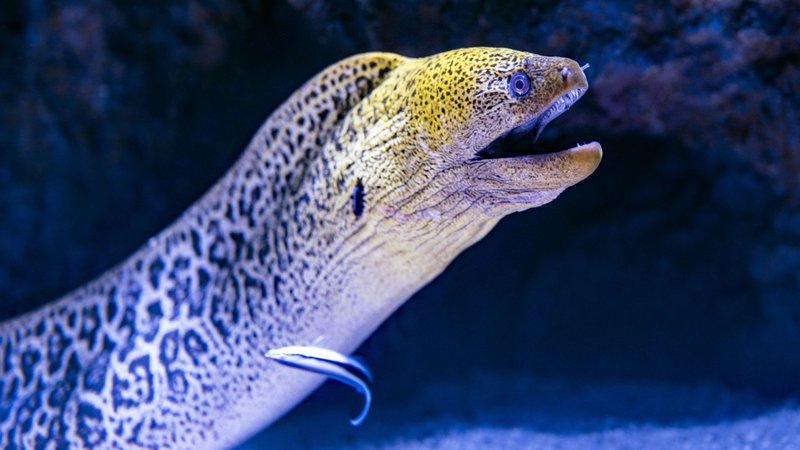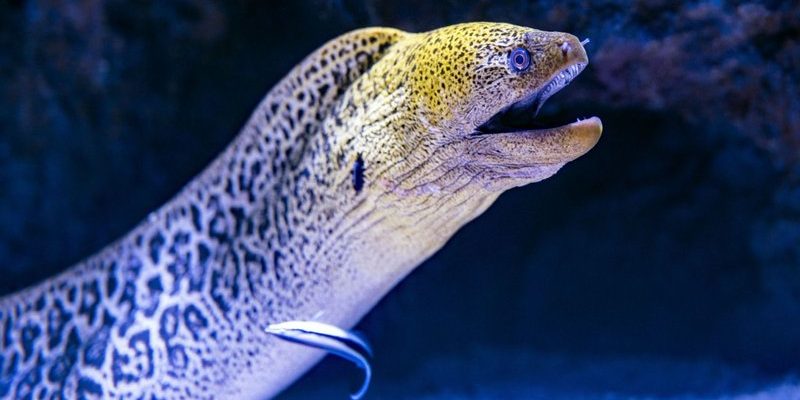
So, what makes eels stand out? Let’s dive into the depths of eel lore and uncover ten interesting facts that will make you appreciate these slippery swimmers even more. Whether you’re a marine life enthusiast or just curious about the oddities of nature, you’re in for a treat.
1. Eels Are Not All the Same
There are more than 800 species of eels, and they come in various shapes and sizes. You might be familiar with the common European eel, but did you know that there are also species like the moray eel? Moray eels are known for their vibrant colors and live in coral reefs.
– The American eel is famous for its long migrations, traveling thousands of miles from freshwater rivers to the Sargasso Sea to spawn.
– On the other hand, garden eels prefer living in colonies in sandy areas and stick their heads out of their burrows like tiny, waving flags.
Each species has its own unique habitat and characteristics that make it special. Isn’t it amazing how diverse this slimy group can be?
2. Eels Have a Unique Life Cycle
Now, here’s where things get really interesting. Eels go through a remarkable life cycle that includes a mysterious journey. They start their lives as tiny larvae known as leptocephali in the Sargasso Sea. These larvae drift in ocean currents for about a year before reaching coastal waters.
Once they arrive, they transform into what we call glass eels. At this stage, they look almost transparent and begin their migration into rivers and estuaries. This is where they spend most of their lives, growing and maturing.
– After several years, depending on the species, they make the long trek back to the Sargasso Sea to spawn.
– Here’s the kicker: no one has ever observed this spawning process, adding an air of mystery around these critters. Just think about the hundreds or even thousands of miles they swim, guided only by instinct and ocean currents.
3. Eels Can Generate Electricity
You might be surprised to learn that some eels can produce their own electricity. The electric eel, which is not actually an eel but a type of knifefish, can generate enough electricity to shock a predator or stun prey. Imagine having that kind of power!
– They have special organs called electrocytes which allow them to create electrical charges.
– Electric eels use this ability not just for defense but also for navigation and communication in murky waters.
It’s truly fascinating to think about how these animals have evolved such a unique survival technique. So, if you ever find yourself swimming with electric eels (which you definitely shouldn’t do!), you’ll want to keep your distance!
4. Some Eels Can Breathe Air
Here’s the thing – not all eels are like typical fish that rely solely on gills to breathe. Many eels, like the European eel, can gulp air at the water’s surface. This adaptation is life-saving, especially in oxygen-poor environments.
– Eels have a special structure in their gills that allows them to absorb oxygen directly from the air.
– It’s like having a built-in snorkel! This ability helps them thrive in habitats where other fish might struggle.
Imagine an eel popping up for air like a seal – it’s a quirky sight that illustrates their adaptability.
5. Eels Are Masters of Camouflage
If you thought eels were just boring, slimy fish, think again! Many eels are fantastic at hiding in their environments. Their elongated bodies allow them to slip into crevices and rocks, where they can camouflage seamlessly.
– The moray eel is a prime example. With its mottled skin, it can blend in with coral reefs and rocky outcroppings. This skill is not just for show; it helps them ambush prey and avoid becoming prey themselves.
– Imagine a sneaky eel waiting patiently in a crevice, ready to strike at unwary fish swimming by.
Camouflage is one of nature’s coolest tricks, and eels do it exceptionally well, making them true underwater ninjas!
6. Eels Have a Long History
Eels have been around for a very long time, with fossil records dating back over 100 million years. They’ve survived mass extinctions and significant climate changes throughout history. Isn’t it incredible to think that these creatures swam alongside dinosaurs?
– Ancient cultures, like the Greeks and Romans, revered eels, often incorporating them into their cuisine.
– In Japan, eel dishes are still a delicacy and have cultural significance. They symbolize resilience and vitality.
Eels have not only been a part of the ecosystem but also of human history, showcasing how interconnected our existence is with the natural world.
7. Eels Are Important to Ecosystems
You might not realize it, but eels play a vital role in aquatic ecosystems. They’re both predators and prey, helping to balance the food web.
– Eels feast on smaller fish, invertebrates, and even plant material, controlling the populations of these creatures.
– At the same time, larger predators, like otters and birds, rely on eels for their sustenance.
By maintaining this balance, eels contribute to the health of their aquatic environments. So, the next time you see an eel, remember that it plays a crucial part in keeping our ecosystems thriving.
8. Eels Face Environmental Threats
Unfortunately, eels are in trouble. Overfishing, habitat loss, and climate change pose significant threats to their populations. The American eel, for instance, has seen a drastic decline in numbers due to dam construction blocking their migration routes.
– Climate change affects water temperatures and currents, disrupting their breeding and migration patterns.
– Additionally, pollution in rivers can harm their delicate habitats, making survival increasingly difficult.
It’s essential to understand these issues so we can work toward preserving eel populations and their ecosystems. Every creature has a role, and losing eels could have ripple effects in nature.
9. Eels Are Fascinating Culinary Delights
In many cultures, eels are considered a delicacy. In Japan, for example, grilled eel, or unagi, is highly prized. It’s often served on a bed of rice, and it’s not just about flavor; it’s a part of tradition.
– Cooking techniques can vary widely, from grilling to smoking, and the end result is a rich, flavorful dish.
– In Europe, eels are traditionally prepared in jellied form, served as cold dishes during special occasions.
Eating eels isn’t just a meal; it’s an experience tied to culture and history. If you’ve never tried eel, it might be worth exploring this culinary adventure!
10. Eels Are Shrouded in Mystery
Despite all we know, there’s a lot about eels that remains a mystery. Their spawning behavior is still not fully understood, and scientists continue to study these elusive creatures.
– It’s like they’re nature’s best-kept secret, holding onto their reproductive details like a magician with a fantastic trick.
– Researchers are working hard to unlock the mysteries of eels, which could lead to better conservation efforts and a deeper understanding of their role in the ecosystem.
Eels remind us that even in a world filled with information, there are still wonders waiting to be discovered. Isn’t that a beautiful thought?
In conclusion, eels are much more than just slippery fish. They’re fascinating creatures with a rich history, unique adaptations, and an invaluable role in our ecosystems. So next time you think about eels, remember these remarkable facts and how much more there is to them beneath the surface. Let’s appreciate and protect these incredible animals, ensuring they continue to thrive in our waters for generations to come.

